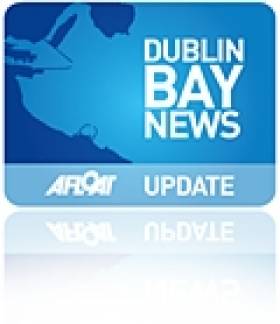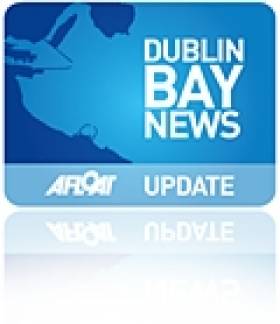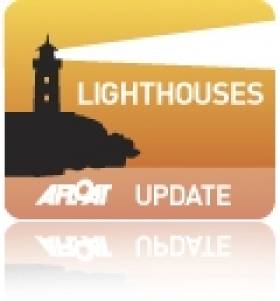Displaying items by tag: Open House Dublin
Renovated Former Mariners Church Open to All
#OPEN HOUSE- The National Maritime Museum of Ireland is to participate in the Open House Dublin weekend in early October, writes Jehan Ashmore.
The former Old Mariners Church was built between the years 1838-1867 for the Church of Ireland, though the architect is unknown. Its construction involved granite rock quarried from Dalkey Hill.
In June of this year the museum was reopened following several years of extensive renovations and a subtle refurbishment which was carried out to ensure its impressive collection can be showcased.
Among the exhibits is a model of the RMS Leinster which was torpedoed off the Kish during WWI with the loss of 500 people. A notable display is an optic from the Baily Lighthouse on Howth Peninsula. It was installed in 1902 and removed in 1972 when the lighthouse was modernised. Also on view is a uniform of Captain Robert Halpin, who was master of the Great Eastern which laid the first successful telegraph cable across the Atlantic from Ireland to the US.
The museum is located on Haigh Terrace, off George's St. Upper, the main street in Dun Laoghaire. Facilities include a coffee dock, a Wi-Fi hotspot and museum shop. Most of the museum is wheelchair accessible.
No booking is required and opening times on Sunday 7th October are 12noon-4.30pm. For information and links to other buildings in the Open House Dublin programme click HERE
Minister to Give Boat-Based Guided Tours of Dublin Docklands
#OPEN SPACE – Minister for Education and Skills, Ruairi Quinn T.D. and Seán O'Laoire, are to present boat-based guided tours of Dublin's Docklands, as part of Open House Dublin weekend, writes Jehan Ashmore.
The three afternoon tours are to be held on Sunday 7th October. According to the organisers, the 'lively' architectural tours are to explore the urban quarter of the Docklands as seen from the water on board the excursion boat Liffey Voyager.
Quinn who was a former leader of the Labour Party, also lectured architecture in UCD, having qualified with a Bachelor of Architecture and he holds a Higher Diploma in Ekistics, the science of human settlements.
For embarkation points, departure times, and how to book spaces (limited spaces) of the tours sponsored by Liffey River Cruises, click HERE. All tours are provided on a first-come first-served basis and have disabled access.
Irish Lights Headquarters to Open to the Public
#OPEN HOUSE- The Commissioners of Irish Lights headquarters in Dun Laoghaire Harbour is to be made open to the public with tours on Sunday (7 October) as part of the annual Open House Weekend, writes Jehan Ashmore.
The iconic landmark building which incoporates innovative technological features is located on the waterfront within the harbour, and in which integrates seamlessly into its marine environment. The Commissioners are a General Lighthouse Authority (GLA) that is responsible for all aids to navigation around the coast of Ireland.
To enable the authority to carry out these functions, the building has an administration block and adjoining marine workshop depot. Adjacent to the facility is a berth where the ILV Granuaile (2000/2,625grt) can moor alongside to load and unload these aids to navigation. The tours will provide a fascinating insight into the work of the commissioners.
For further details and how to book a tour, plus a list of other buildings available to access and more click this LINK.
Open House Dublin is an initiative of The Irish Architecture Foundation which has an established network and track record in delivering major projects primarily aimed at developing audiences for architecture in Ireland. The foundation is also involved in raising the profile of Irish architecture abroad.
Dun Laoghaire Architecture Tour from the Sea
#SAIL-TOUR– Under a ticket lottery scheme there is an opportunity to view the architecture along the Dun Laoghaire coastline by taking a tour on board Go Sailing's 54ft luxury yacht, as part of the annual Open House Dublin weekend (5-7 October), writes Jehan Ashmore.
The tour is scheduled to depart the marina in Dun Laoghaire Harbour at 1.45pm on Saturday (6th October). By taking to the water, the 2hrs 15mins cruise, will provide a completely different perspective of the built environment and overall views along the scenic southern coastline of Dublin Bay.
Due to consistently high demand, the limited places available on the tour are to be distributed via a lottery system, for details as to how to apply they can be found by clicking this LINK.
Open House Dublin: Public Tours of Irish Lights Headquarters
Regular guided tours will provide a fascinating insight into the work of the Commissioners of Irish Lights (CIL). The tours (first-come basis) are also available for disabled access and they start from 12 noon to 5pm, noting the last tour is 4.30pm. Location: Harbour Road, Dún Laoghaire.
Like most of the tours and events in Open House Dublin, there is no pre-booking required. Entry is FREE and on a first-come basis. For more information about what to expect from your tour or event, check the How It Works by clicking HERE.
CIL operate the 79m aids-to-navigation tender ILV Granuaile which is based at her homeport of Dun Laoghaire. The 2,625grt tender was built by the Dutch Damen Shipyard group in Galati, Romania. She was then towed to The Netherlands where further outfitting work was conducted. She entered service in 2000 and she is the third tender to be named after the Mayo pirate queen.
Occasionally ILV Granuaile can be seen moored alongside the berth adjacant to the marine depot accessed through Dun Laoghaire Marina, though she mostly calls to the harbour's western bight area, using her DP (dynamic-positioning) mode. Her design is ideally suited for buoy and chain work, search and rescue, salvage and recovery, towing, hydrographic applications, and ROV work.
She is shallow drafted at 4.4m and has heavy lifting equipment including a 20 tonne aft-mounted crane with an outreach of 20m. Accommodation is for a crew of 16 in addition there are cabins for a further 10 persons.

































































